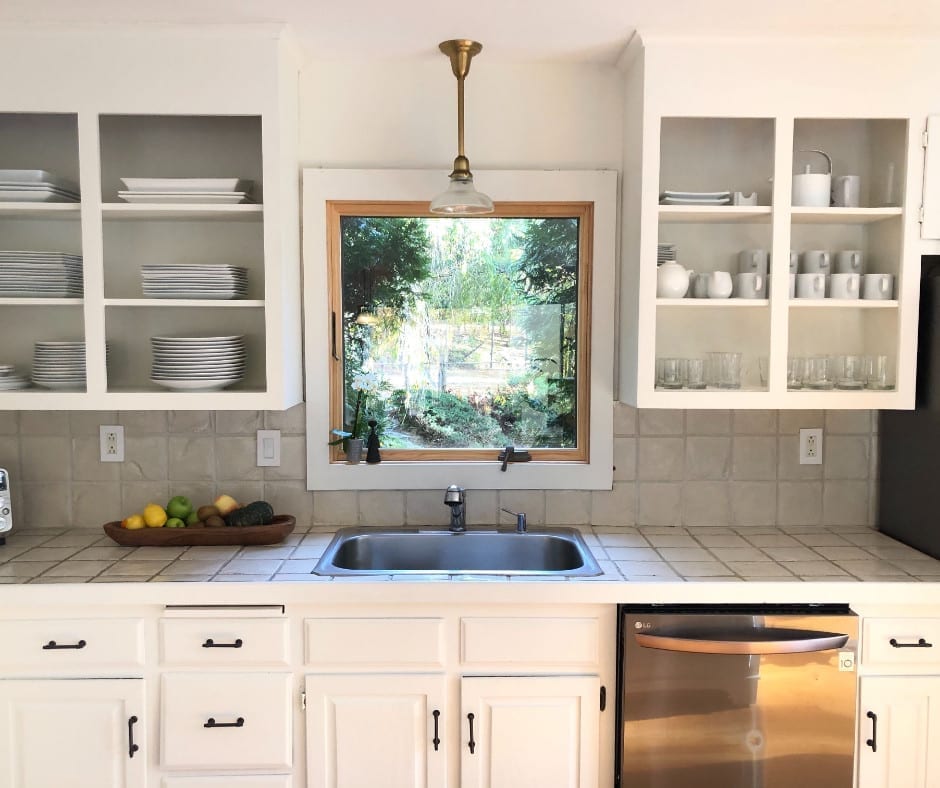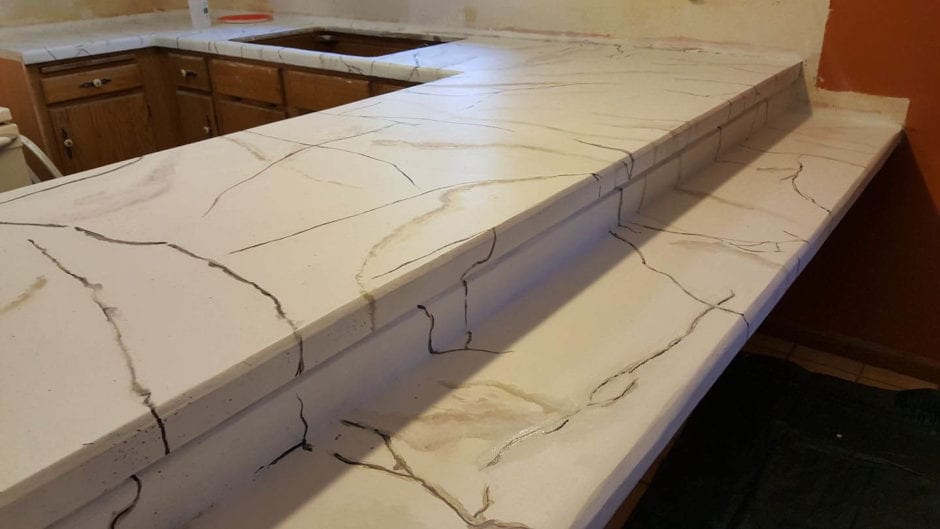Countertop Refinishing With Concrete Overlay
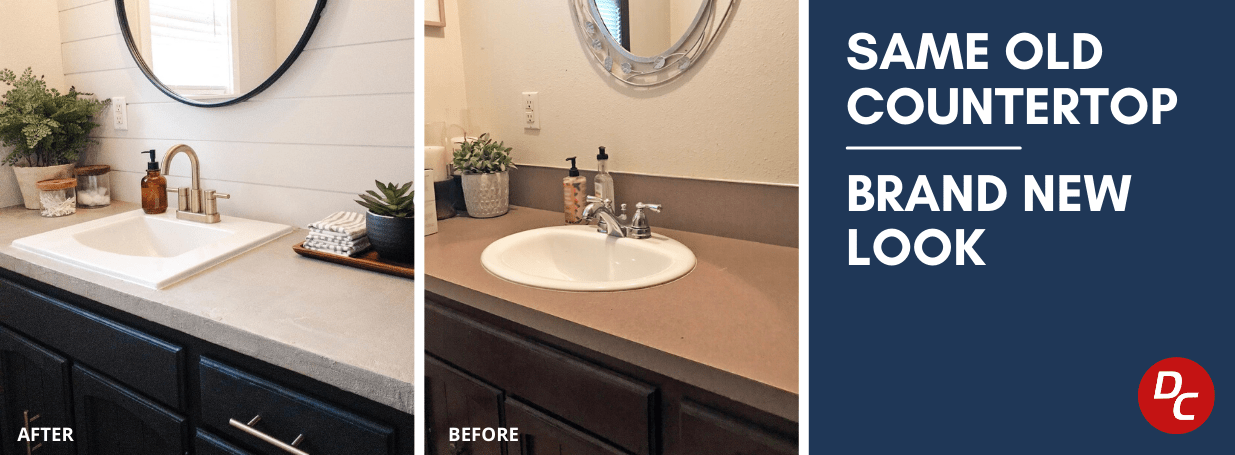
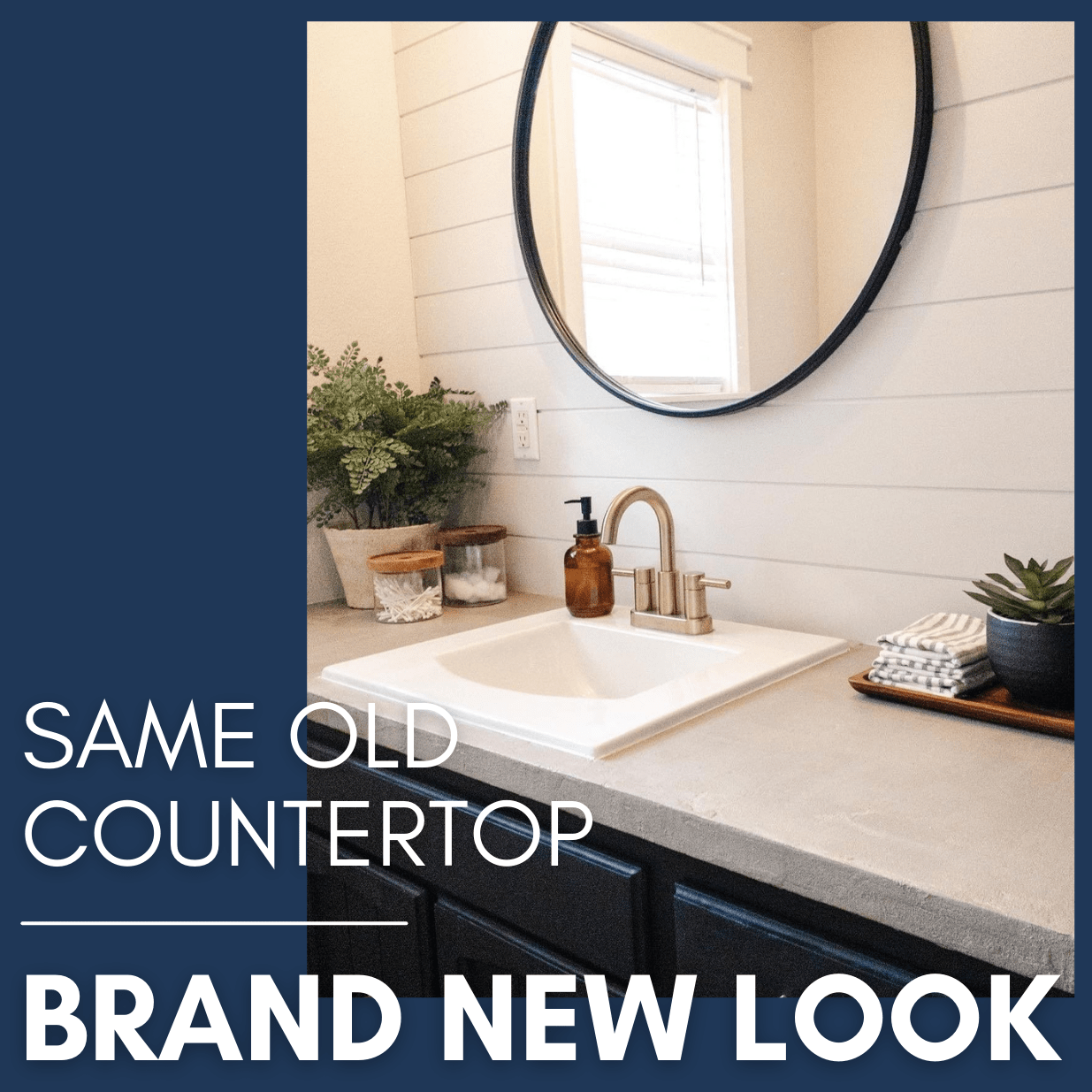
With Direct Colors’ Concrete Overlay, countertop resurfacing for your home or office is easier than you think. With the ability to match your pre-existing home decor, concrete allows you to add stylish design value without breaking the bank.
Read on for more information about concrete countertops and concrete overlay.
What is concrete overlay?
Concrete overlay for countertops is an ultra-strong, easy-to-apply concrete layer used to “lay over” existing laminate, Formica, wood, or tile countertops.
Overlay ensures a durable concrete look and feel at a fraction of the cost required for freshly poured concrete slabs.
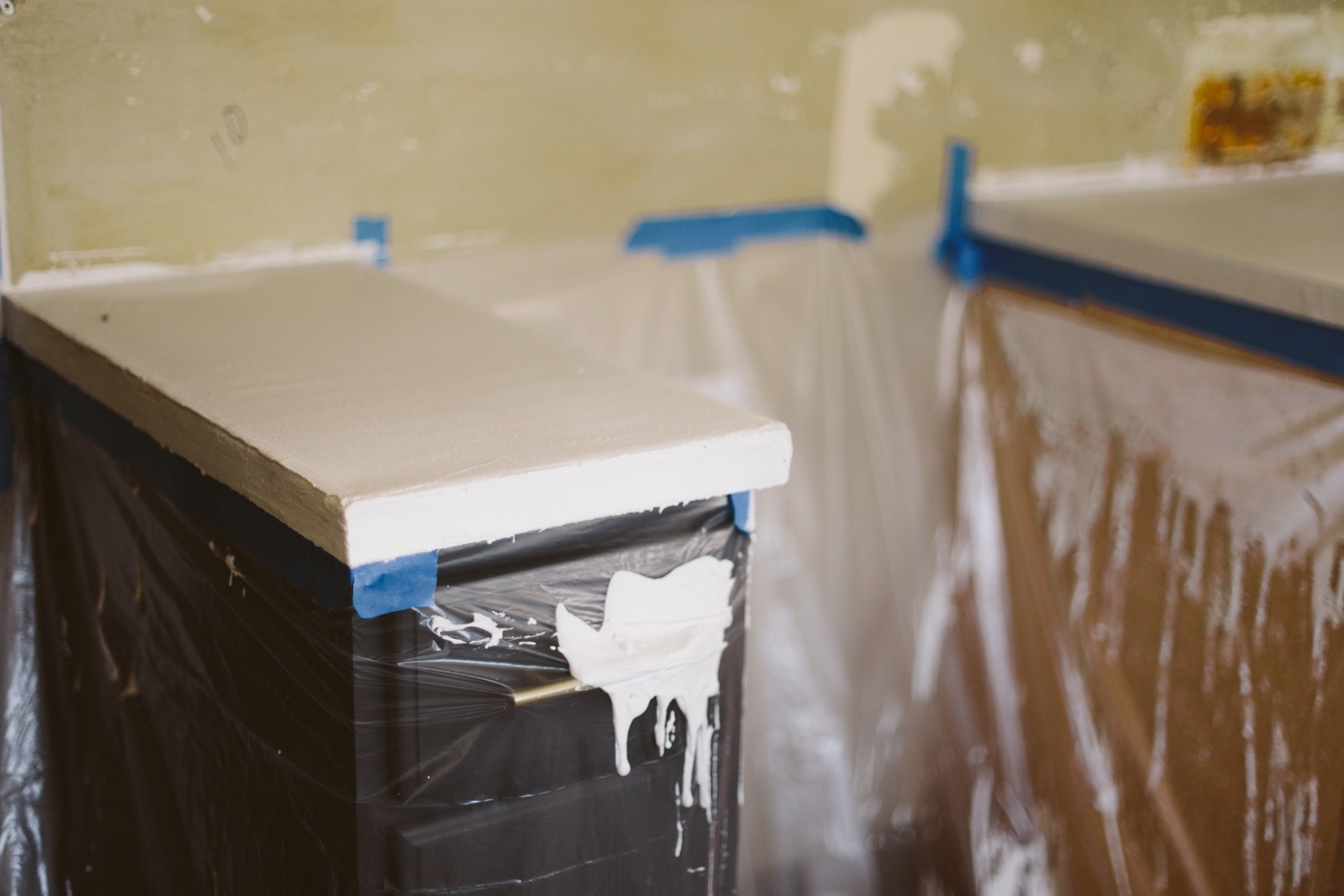
Concrete overlay may be customized with concrete stain, dye, and pigment for rich color and texture at a fraction of the cost of newly poured concrete.
Whether you’re refinishing concrete for a new look, repairing a crack, or overlaying on top of existing countertops, this DIY-friendly option will make your counters look and feel professionally done!
How much do concrete overlay countertops cost?
The estimated product cost for refinishing your existing countertops with an integrally colored concrete overlay is $1.15 per square foot. Total project cost depends on preexisting conditions and design aggregate and finishes.
How to Refinish a Laminate Countertop
Time needed: One day
-
Ensure your existing laminate countertop is reinforced and exhibits no flex.
-
Scuff the laminate surface with 120-grit non-loading sandpaper.
-
Clean the laminate with a damp cloth to remove any dust or debris from scuffing and allow it to dry.
-
Add concrete overlay to the vertical surface edges.
-
Overlay the surface and allow it to dry for 3-6 hours or until the overlay achieves a uniformly light gray color.
DIY TIP: “I’m a beginner, so I had to do small patches at a time, I mixed smaller amounts at a time because the mix would dry out before I was able to finish my current patch.” – Allison C.
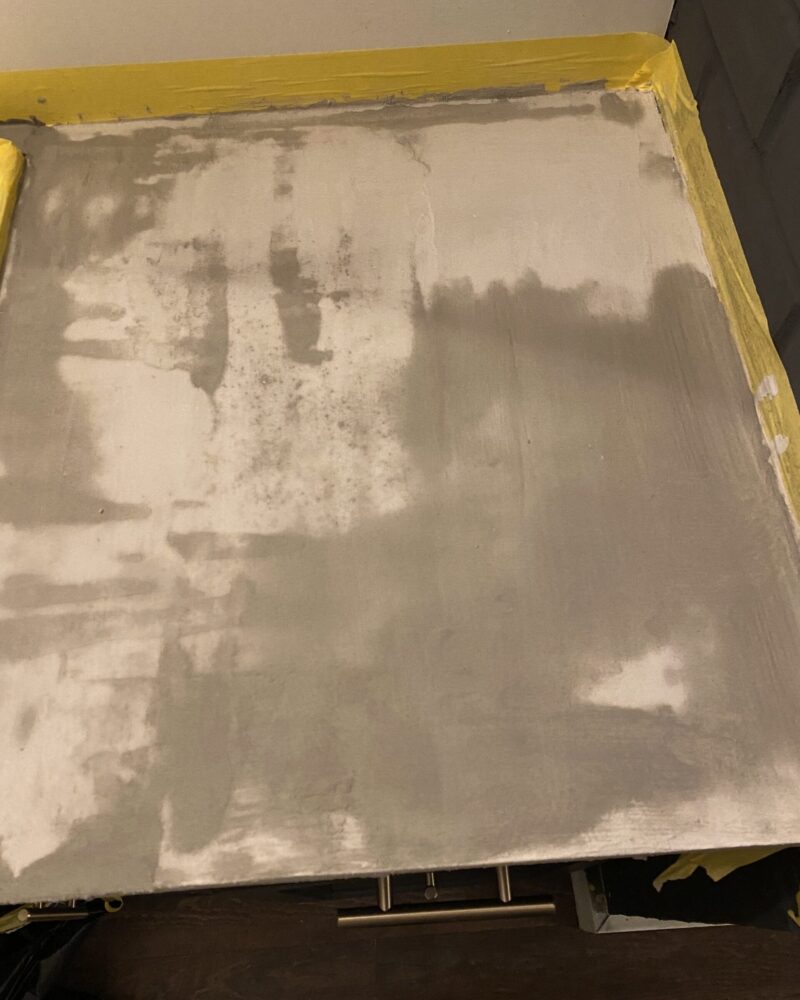
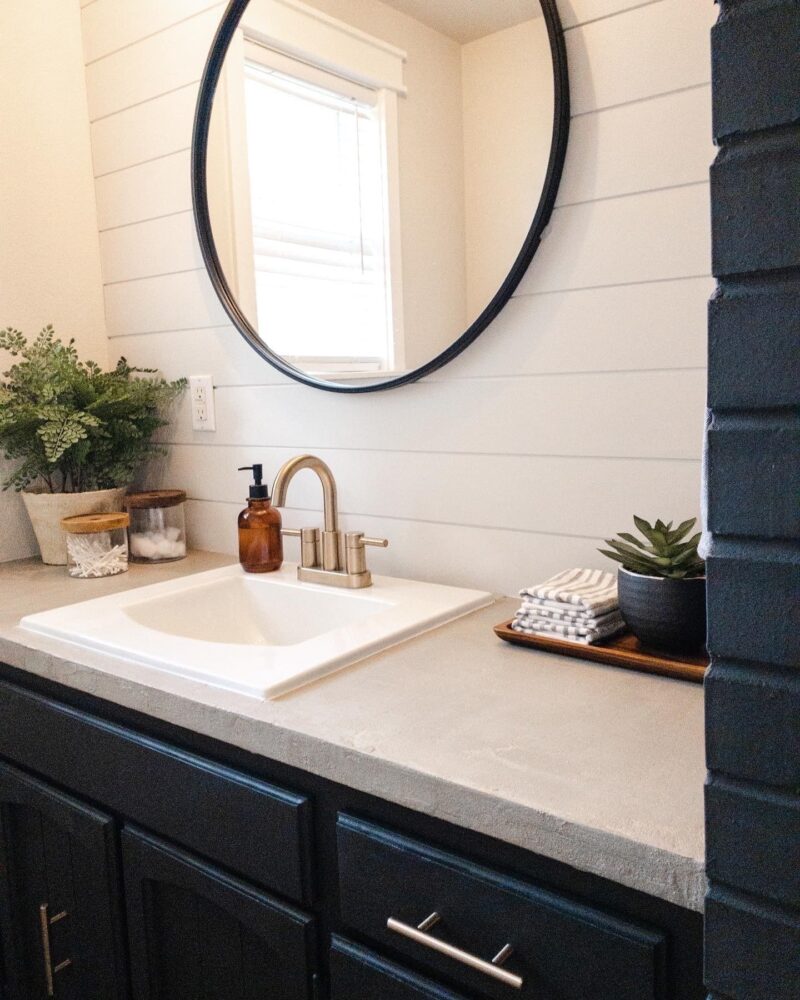
“Used the Ash color concrete overlay and matte water-based polyurethane sealer to re-finish our bathroom vanity countertops. I had tried painting them in the past but it never looked as great as the concrete does!”
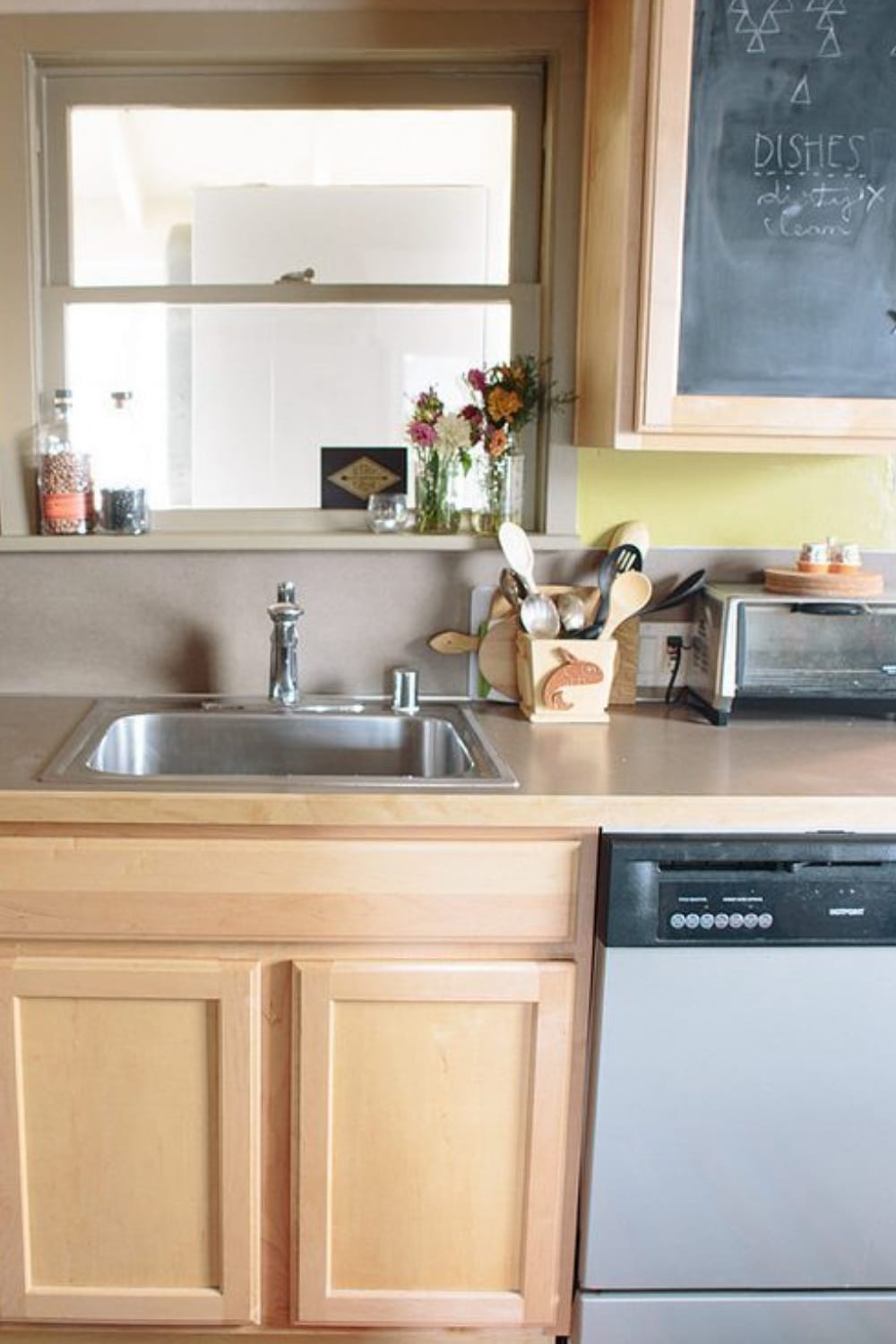
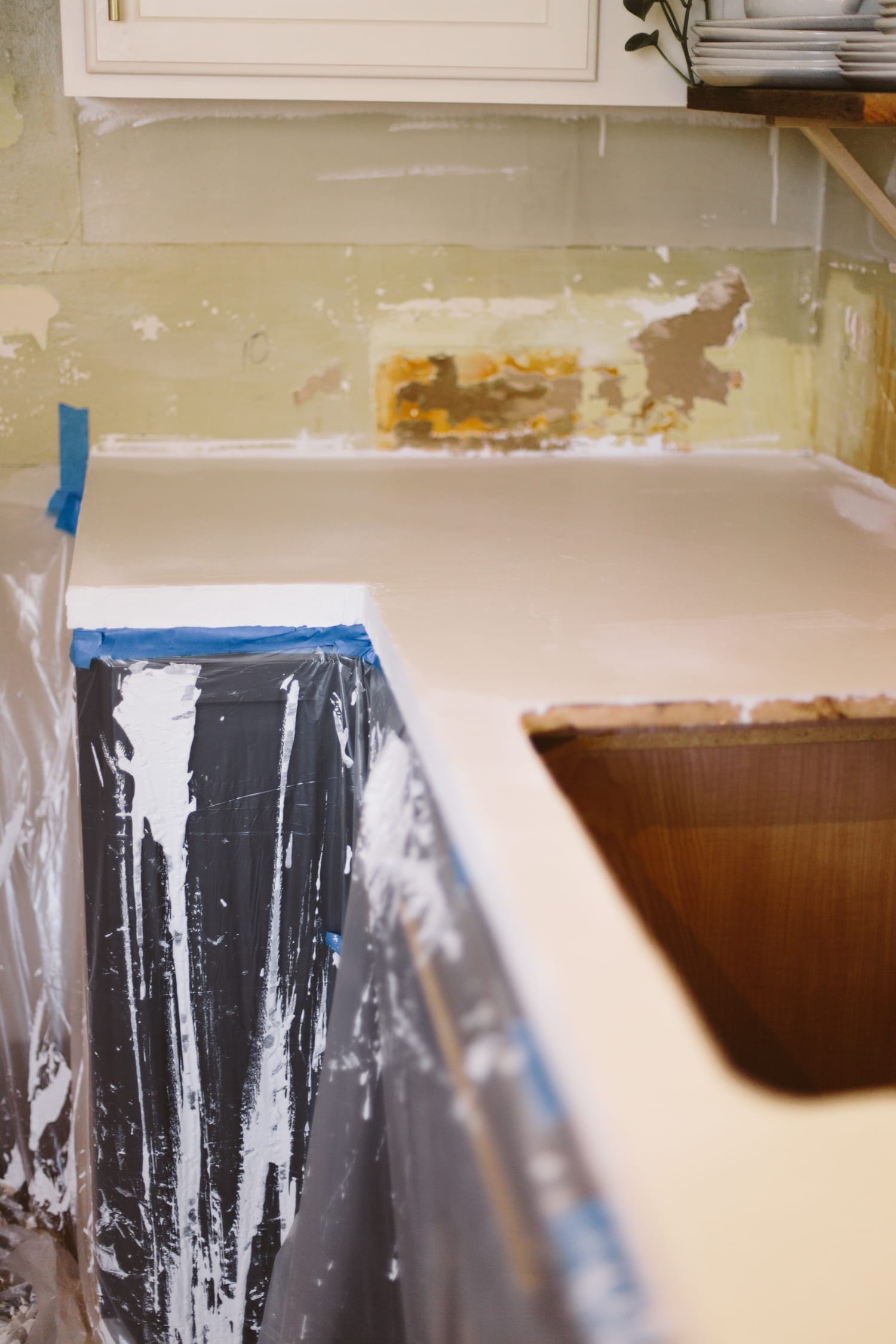
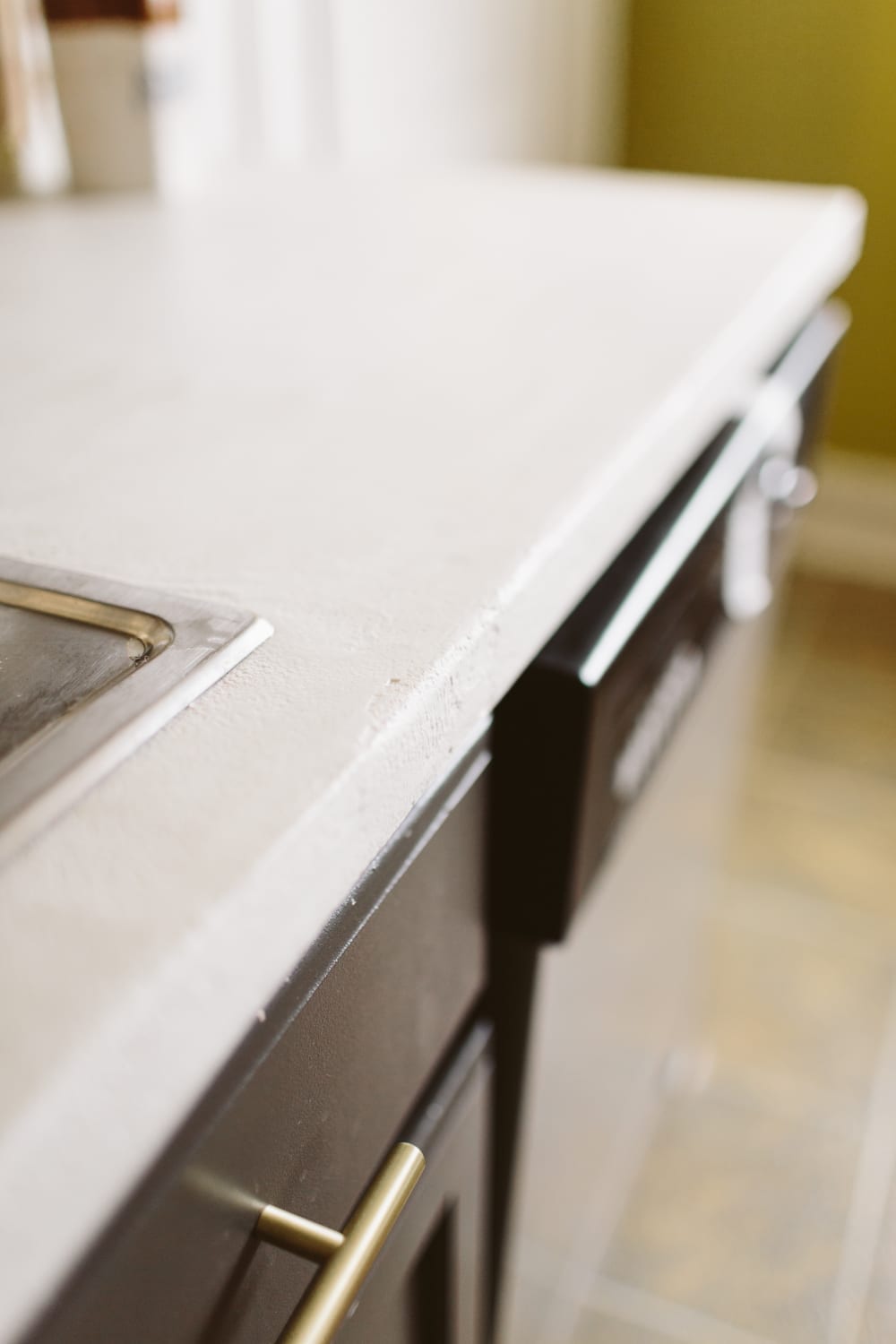
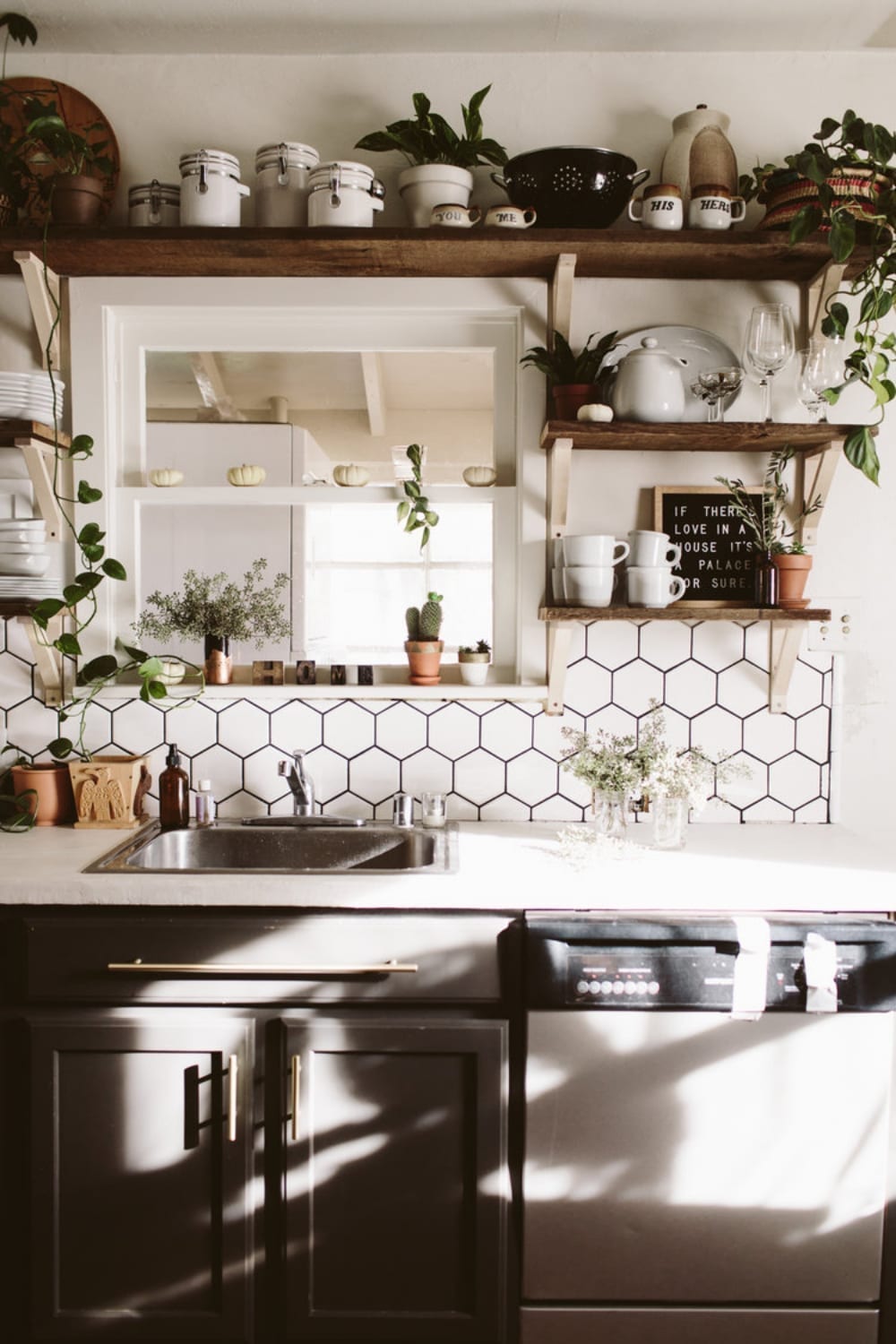
How to Apply Concrete Overlay to Plywood Countertops
Time needed: Two days
- Select ¾ inch plywood with a sturdy base that exhibits no flex.
-
Attach Hardieacker board, or similar concrete board to the plywood using non-corrosive screws.
- Fill all seams and screw holes with two-part epoxy and allow 16 hours to dry.
- Once the epoxy has cured, sand the areas down flush using 180-grit non-loading sandpaper.
- Thoroughly clean all dust and debris from the surface in preparation for the sealing.
- Seal wood first using a urethane or solvent-based sealer and allow it to dry. Do not apply overlay directly to unsealed plywood.
- Wipe down the surface in preparation for the overlay.
- Overlay the surface and allow it to dry for 3-6 hours or until the overlay achieves a uniformly light gray color.
-
Apply a second skim coat and smooth with a magic trowel to prevent “ghosting” unless that is the desired finish.
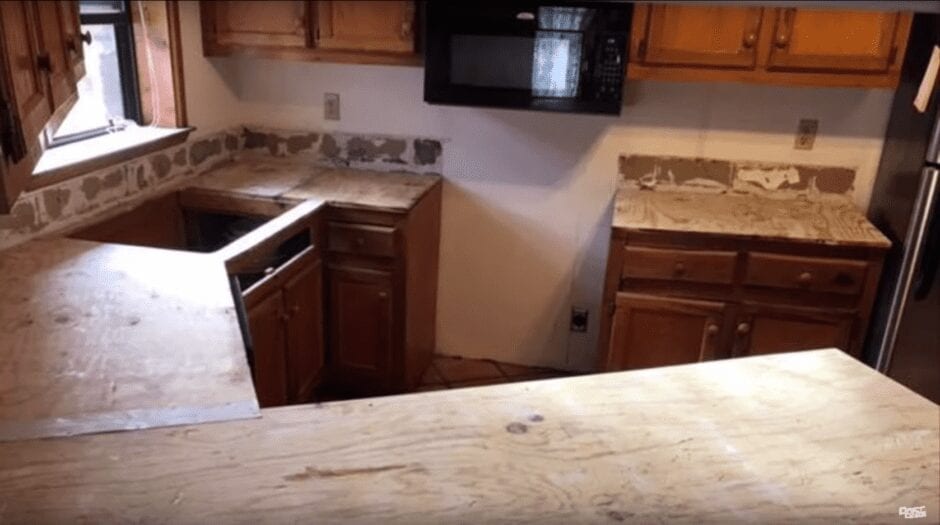
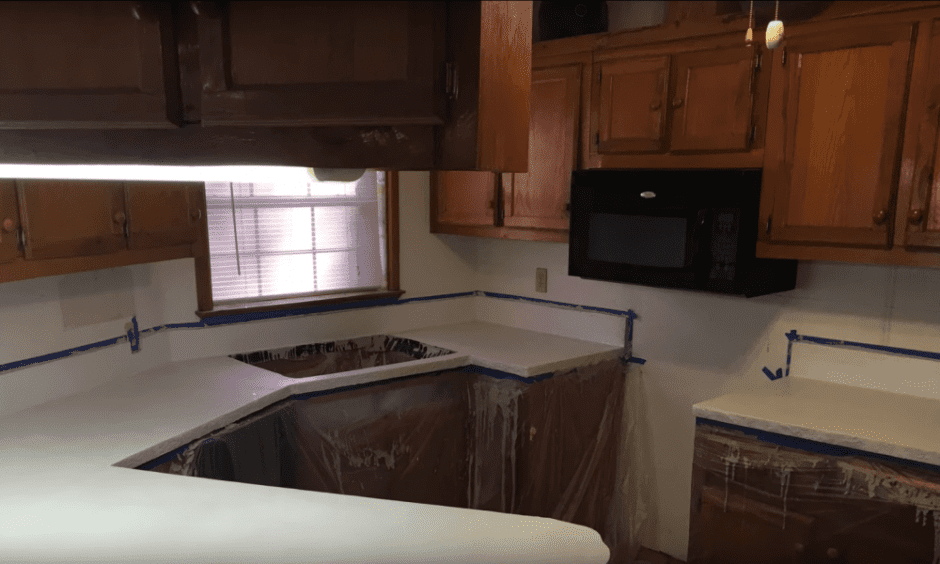
How to Refinish a Tile Countertop
Time needed: Two days
-
Ensure your existing tiled countertop is leveled.
-
Scuff the tile surface with 120-grit non-loading sandpaper.
-
Wipe the tiled surface with a damp cloth to remove any dust or debris from scuffing and dry.
-
Fill all seams with two-part epoxy and allow for a 16-hour cure time. Once cured, sand the areas down flush using 180-grit non-loading sandpaper.
-
Clean all dust and debris from the tile.
-
Add overlay to the vertical surface edges before applying on the tiled countertop.
-
Apply concrete overlay and allow to dry for 3-6 hours or until the overlay turns into light gray color.
-
Apply a second skim coat and smooth with a squeegee trowel to prevent tile “ghosting” unless that is the desired finish.
DESIGN TIP: Add colored concrete pigment to the “slurry” mixture for an additional flourish of color.
How To Make a Terrazzo Countertop with Concrete Overlay
Time needed: Two days
- Apply a ¼ inch overlay coat and press the natural stone and/or recycled glass aggregates into place, leaving the desired space between.
- Allow the concrete overlay to dry for a minimum of 14 hours.
- Then mix water and overlay to the consistency of a thin pancake batter to form what is known as “slurry.”
- Apply the “slurry” to the surface of the freshly laid aggregate to fill any voids or pinholes and let dry.
- After 24 hours, polish the countertop to reveal the natural stone or recycled glass aggregates.
- If you use small natural stone or glass aggregates, less than 10mm in size, they may be mixed directly into the overlay, allowed to dry, and then polished to be revealed.
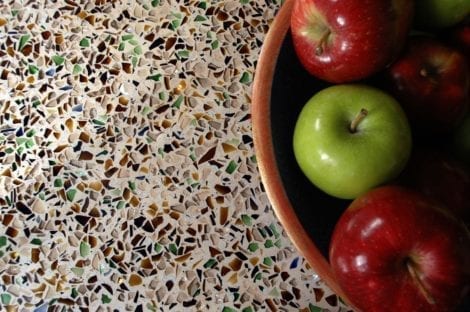
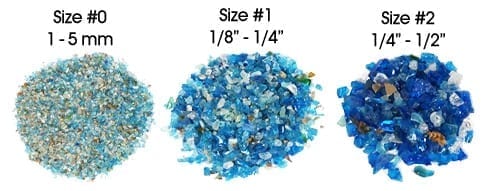
How do I prepare concrete overlay?
We recommend using a five-gallon general-purpose construction bucket for mixing concrete. When working in batches, use the same amount of water for each round of mixing to promote consistency.
Start by pouring one gallon of water into your bucket. Then, slowly begin pouring the contents of a 50 lb box of concrete overlay into the bucket while mixing continuously with a drill mixer. Use a “birdcage,” high-shear paddle when bucket-mixing for best results. This ensures the water will hydrate the dry polymer cement mixture and properly disperse all essential elements.
Use less water for a thicker consistency, or thin the overlay during application by adding water “as needed,” up to a maximum of one additional gallon. If using colored concrete pigment, it is essential that the water amount be kept uniform for every box of overlay to avoid color discrepancies.
The “pot life” for the overlay is approximately 45 minutes. Overlay will not perform to the potential beyond this window, but may be extended 15 minutes by using ice-cold water during the mixing process. Ambient temperature will also affect pot life, with cooler temperatures marginally extending it and hotter conditions shortening it.
How thick does a concrete overlay have to be?
The coverage rates for Direct Colors’ concrete overlay vary depending on the thickness of the layer you apply.
For ¼ inch thickness, a 50 lb bag will cover 20–25 square feet. For a skim coat at ⅛ inch or less, a 50 lb box should cover 50 to 130 square feet, depending on the thickness.
How to Make Concrete Countertops Look Like Marble
Metallic epoxy transforms concrete countertops into showstopping decor. With Direct Colors’ comprehensive guides and tutorials, this process is easier than ever before.
Everything White Concrete Countertops
Learn what it takes to create white concrete countertops for your home or office. This DIY project delivers professional-looking results at a low cost with little construction skills required.





